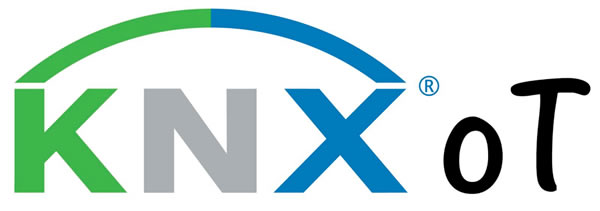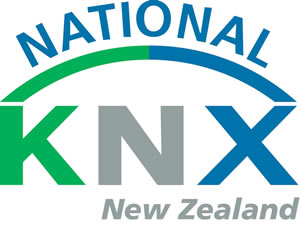 By Colin Price, Ivory Egg.
By Colin Price, Ivory Egg.
I write this 35,000 feet above the evolving KNX markets of New Zealand and Australia as I return from a European visit, where ‘IoT’ and ‘mobile everything’ seem to occupy the popular press and trade journals. Amidst this incessant turmoil, we should not lose sight of what KNX has to offer in the realm of building controls. KNX is the ‘glue’ that already allows for multiple devices across multiple disciplines, to communicate over multiple media, to control multiple building functions. In so many respects, we already have the connectivity being hyped as ‘new’. We have the ‘KNX of things’, or, if you like, the KNXoT.

The Potential of KNX Down Under
In October 2015, the KNX National Groups of New Zealand and Australia are presenting the
KNX City concept to local industry for the first time at the Facilities Integrate 2015 exhibition in Auckland. Right now, looking down on the volcanic landscape below me, I see a region with a huge opportunity to ‘do the right thing’ and design buildings that include KNX. Based on the experience of European markets, it seems that with some care, there can be great advantages to following on from others and learning from their experiences, successes and mistakes.
KNX is already well-involved in the commercial market and will push into the residential market with the introduction of new switch styles that are appropriate in New Zealand and Australia. As a challenge, there are incumbent proprietary technologies in this market, but we expect to see their popularity reduce over the coming years as manufacturers realise the potential of KNX through its regional standardisation.
The Opportunity for KNX within the Internet of Things
It seems crazy not to consider the IoT as an opportunity, and if we ignore this, then there is every chance we will be consumed by it. The KNX Association has already responded by engineering the protocol to allow for native KNX-IP devices that ‘talk’ KNX using broadcast Ethernet. Now it is up to manufacturers to run with this and release products that take advantage of KNX-IP. If the KNX Association continues to play its part well, I would expect to see new KNX manufacturers appear from the mass-market arena and introduce KNX products that we would not have thought possible a couple of years ago. By embracing the IoT and connecting it with the KNXoT that already exists, our industry will ensure its future in this space. Perhaps the most exciting part of this evolution is the possibility of all environmental control devices being a part a single ecosystem, with KNX being central to controlling the environmental envelope.
Long-term Systems
Since arriving in Auckland from the UK, there has been much activity in growing the awareness of KNX, and its key messages of interoperability and openness. It has been distressing to pick up a number of really key jobs from building managers who are in the unfortunate position of owning proprietary systems that have been superseded, or abandoned by the principle manufacturers. All had been sold systems that were supposed to ‘perform for the lifetime of the building’. How disappointing for them! The unfortunate side effect is bad for building control as a whole, and worse still for a protocol such as KNX that is just getting a foothold in a new market. What is the counter position? Perhaps honest commiseration is the way, and then back away from a customer who you probably will not be able to win back to building control any time soon.
On the other hand, there is customer appetite for an industry association that promotes a standard of installation – although just being a part of a national group or user group is not enough to give the consumer confidence that the product and installation will be of a quality that will last the lifetime of the building.
So how about selling the benefits of an association that has a code of conduct for its members? A code of conduct, although not much on paper, does imply that a national group has teeth to ‘police’ those who endorse the standard in the market. To the customer, a code of conduct implies that the integrator has signed up to set of guidelines that have been long-considered and evolved to benefit users of the product.

Project Management
At the end of the last century, and maybe even the last decade, an integrator would deliver a technical solution to a broad specification, often making the solution up as the client read about the latest gadget in a magazine. Now, to win and be successful in higher-profile jobs, integrators are bringing in best-in-class project managers to manage the delivery of the job and the client expectations.
Norm O’Leary, executive director of CSIA (Control System Integrators Association), noted, “We find that most integrators go out of business or disappoint customers by the way that they manage a project, not because of their technical abilities.”

Project management is so key to success, that every integrator should consider the effect of doing this badly on their business. It’s all too easy to give a job away in order to win it, but that doesn’t help with the longevity of your business.
Return on Investment
The ROI delivered to a customer of building services needs to be measurable on many levels, both financial and emotional, and is often hard to quantify. We have all looked for concrete figures linking KNX benefits to project types, and other than the standard text, which we have seen many times, there really is very little to substantiate the claims that KNX delivers significant energy savings and cost savings to building managers . The industry has a
challenge to generate the type of material that will clearly demonstrate, over a range of building types, the positive effects of using KNX as a platform.
In residential applications, often the conversation starts with the aesthetics of the wall furniture. Conversely, in commercial buildings, the financial benefits are king and it is here that KNX can
really seal its claim to be the ‘world standard’. It is clear that the KNX Association is in a unique position to gather and produce such source material to support the claims. We all know the logic to using KNX, but commonsense is not enough to sell a product in the boardroom.
Further to this, consider a smart ROI when communicating with customers. For instance, smart metering may be used to monitor utility consumption and influence energy usage profiling, but ROI should consider the lifetime replacement costs of the system as well as the short-term financial returns.

Conclusion
Within the environment of building controls, KNX is already strong, and by combining this with the IoT we have the opportunity to present a dominant technology solution. Furthermore, if we can demonstrate the non-technological benefits too, we can drive the customer decision-making process towards interconnectivity of functions and parts with a very compelling message .
We are in a phase of rapid global expansion for KNX, and as former U.S. President John F. Kennedy famously said, “A rising tide lifts all boats.” With a common theme, and a narrative aligned to global trends in connectivity, KNX will continue to strengthen its position in the worldwide building controls market.
Colin Price is the Director of Ivory Egg (NZ) Ltd. Ivory Egg is a technical distributor of KNX products, training and services. Since 2001 it has been helping integrators to get going with KNX, and complete jobs based on fully-integrated solutions that are simple to implement and highly reliable.
You are welcome to comment on this article below, and to tweet #KNXoT to ivoryeggnz.












